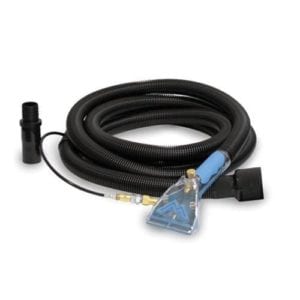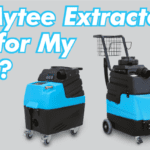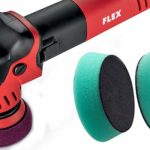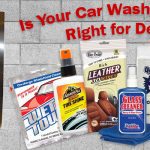Professional Car Detailing Supplies
Attention to detail is necessary to bring out the true beauty of a car. Do you have a passion for car detailing? Are you considering opening up an auto detailing shop? This post will cover basic tools of the trade that you need to run an auto detailing business. There have been several mainstays over the years, including these 3 essential items for auto detailers: a pressure washer pump, a wet-dry shop vacuum, and an electric buffer.
Exterior Auto Detailing
Auto detailing consists of two parts, exterior and interior, and any good car detail begins with a clean car. First, wash all of the dirt and debris off the car surface and tires, using soap and water. Then, you can use a clay bar or apply auto detailing chemicals, waxes, and sealants. Otherwise, this dirt could still be trapped in the paint. Pressure washer pumps and water nozzles are used for the initial exterior car washing.
After that, you can move to the buffing and correction stage. An electric rotary buffer is the polishing tool of choice. Use it for exterior detailing to remove scratches and swirl marks to leave a sparkling finish on car paint. Electric polishers became so popular since many operators couldn’t afford an air compressor. Many mobile operators find carrying around a large, hefty air compressor unwieldy. So, the choice of electric tools is a no-brainer. These buffers or polishers work with many different types of buffing pads. You’ll want to consider a number of points when choosing a buffer:
- Quality: Check the reputation of the polisher, and seek out reviews! However, one thing you can be sure of – if we carry the manufacturer at Kleen-Rite, they are a trusted producer with a great reputation. That’s why we highlight Rupes, Cyclo, and Flex polishers for our customers!
- Speed Range: Most polishers feature variable speed these days. Most buffing processes start slow, then increase speed over time. Look for one that fits your range, usually varying from 6000 RPM up to 3000 RPM.
- Throw: “Throw” describes the size of the orbit your polisher will cover. A larger throw will help you get a large vehicle done faster. However, it can make it hard to get into small areas, and can end up causing overthrow. Consider getting two different sizes – one for tackling bulk work, and one for fine work.
- Weight: You’ll have to be handling this unit regularly! So, you’ll want something ergonomic and, more importantly, lightweight.
- Price: Above all, you want to turn a profit, right? We’re not saying you should go for the cheapest one, but you should consider what may be worth sacrificing to save. For instance, a less-expensive buffer with a mid-range throw might be a better option than one large and one small buffer.
In addition, you’ll need to select from the variety of aggressive and less aggressive pads to meet your detailing needs. See our Types of Car Detailing Pads post for more information.

Interior Auto Detailing
Trust shop vacs and extractors for the interior detailing. While still offering great cleaning power, these detailing tools have become smaller in size over the years. This makes them much easier to maneuver, and makes them great for mobile detailing services. In addition, many of them combine multiple processes into a single tool. Carpet extractors and upholstery tools will help remove all dirt from car floors and seats.
Consider this car detailing equipment for your shop. See our Detail Supplies category for our full offering of professional car detailing products.











